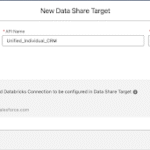It’s Saturday night. You send a text to your friends suggesting you all try a new restaurant. You share its five-star reviews, talk up the cool vibe, and send them the drool-worthy menu to get them onboard. Then, you ask who’s in.
You presented an option, focused on the benefits, and asked for buy-in — nice proposal skills.
While writing a business proposal is a more structured process, the concept is similar. So, what is a business proposal, and how can you use one to win more customers? Read on to learn more.
What you’ll learn:
Speed up the sales cycle with trusted AI
Give your sales team generative and predictive AI tools in Sales Cloud — with guidance to close deals faster.


What is a business proposal?
A business proposal is a document created by a company that outlines the features and benefits of its products or services for a prospective buyer. It seeks to attract potential customers by describing in detail how your offering can help solve their specific problem or need. Business proposals are sent digitally and physically and are often presented in person or via virtual meeting.
Why is a business proposal important?
A business proposal is a way for sellers to convince a prospect to purchase their product or service. In the sales cycle, a proposal usually comes after the prospecting, qualification, and presentation stages, before negotiation and closing the deal. An effective proposal is personalized to your prospect, clearly articulates why you’re the best solution, and sets you up to close the deal in the final steps of the sales process.
Business proposals are important for the following reasons:
- They consolidate information: During the sales process, prospects can receive a lot of information from sellers. And buying decisions are just one task on their already long to-do list. This can leave them feeling overwhelmed or even confused. A business proposal summarizes all the details of your offer and presents it in one clear and concise document that prospects can easily refer to later.
- They help leave a good impression: A well-written proposal is a reflection of you and your company. After many interactions in the nurturing phase of the sales cycle, your proposal is a physical reminder for prospects of your company, your relationship with them, and what you have to offer.
- They facilitate buy-in from absent decision-makers: Not everyone involved in purchasing decisions can attend every meeting or hop on every phone call. A business proposal is a way to communicate important information with absent stakeholders and decision-makers, so you can get purchase approval faster.
Types of business proposals
A business proposal is either solicited or unsolicited. Unsolicited proposals are sent to prospects who have not requested them. These are less common because they’re broader and can be harder to tailor to the specific needs of your prospect. An example of this is when a toy manufacturer proposes a licensing deal to an animation company to use its cartoon character on their toys.
When a prospect or customer requests a business proposal from your company, it’s known as a solicited proposal. I’ve found these types of proposals to be more prevalent in sales because they are written with a specific recipient or request in mind. Business proposals may be formally solicited through an official process or informally solicited during a sales call or meeting.
Some common types of solicited business proposals — requests from companies looking for products or services — include:
Request for proposal (RFP)
Companies will distribute requests for proposals (RFPs) to potential vendors if they have a large or complex project they need to complete, but lack the internal resources to do so.
RFPs outline the company’s objectives, scope of work, timeline, budget, and other criteria for the desired product, service, or project. Prospective vendors respond with proposals, outlining their solution to the company’s problems or needs based on the RFP criteria.
Example: An AI startup issues an RFP for human resources software that can scale as it adds more employees. A software vendor responds with a proposal detailing the scalability of its software.
Request for information (RFI)
A request for information (RFI) is like an RFP, except it only asks for general information about a vendor’s product or services. An RFI typically precedes an RFP. It’s used by companies to explore options and narrow a list of vendors who may receive an RFP.
Example: An AI startup issues an RFI for human resources software. A software vendor responds with an overview of its product.
Request for quotation (RFQ)
A request for quotation (RFQ) is when a company asks a vendor for the price of its product or service. An RFQ is typically used when a company already knows the product they need and is comparing vendors based on price to make a decision. In addition to price, a vendor’s RFQ proposal may include its product availability, delivery times, and technical requirements.
Example: An AI startup issues an RFQ to a software vendor asking for a price for its human resources software. A software vendor submits a proposal with its pricing tiers, including discounts for annual subscriptions and add-on fees.

Thanks, you’re subscribed!

How to write an effective business proposal
The State of Sales report cites cross-functional alignment as sales leaders’ No. 1 tactic for driving growth. At most companies, sales reps create business proposals with input from leadership, marketing, finance, and sales operations. This alignment ensures the proposal accurately reflects the company’s brand and its prospect’s needs. Let’s walk through the steps of writing a proposal.
Key elements of a business proposal
Make sure you’ve covered everything your prospect is expecting from your proposal. Review the RFP (if applicable) to ensure you’ve met its requirements, read your call notes, and ask the prospect about any areas that need clarification.
Every business proposal should include these components:
- Cover page: This is the first thing a prospect will see and should be personalized to them. Include the proposal title, the prospect’s name and company, your name and company, and your contact information. Include the date you submit the proposal to ensure you comply with any hard deadlines set by prospects.
- Executive summary: This is a critical piece of the proposal. If your executive summary is not concise, accurate, and engaging, you risk the reader abandoning the rest of the proposal. Identify the pain point, as described by the prospect. Describe how your solution solves their concern. Articulate the expected business outcomes if this investment is made. This section is not about you; it’s about your prospect and how their pain point can be resolved.
- Table of contents: Include page numbers and hyperlinks (if digital) so the recipient can easily navigate the proposal’s sections.
- Problem statement: This is your “what.” State the prospect’s problem or need in a way that sets up your company as the best solution. Highlight the benefits of your product or service. For example, if a prospect has cybersecurity challenges from malware and phishing and your software excels at malware, focus on that problem area over phishing.
- Proposed solution: This is your “how.” It’s where you explain how your product or service will help solve your prospect’s problem or need. It should include your scope of work, deliverables, methodologies, timeline, and terms and conditions.
- Qualifications: This is your “why.” Here, you’re telling your prospect why your company is the best choice for the job. You should highlight your experience, expertise, previous successes, and value. Consider including your company’s certifications, awards, customer case studies, or testimonials.
- Pricing: Include pricing if the prospect asks for it. Oftentimes, including tiered pricing options in a proposal can lead to a faster close because there is less back-and-forth price negotiation. An example of tiered pricing for a software subscription model is listing price options for one, two, and three years. Generate quotes quickly and accurately with a configure, price, and quote (CPQ) tool tied to your CRM data.
- Conclusion: Wrap up with a summary of the proposal. Outline the next steps if the prospect were to buy in, such as a project kickoff meeting and estimated start date. Include your contact information for any questions.
Join the Salesblazer movement
We’re building the largest and most successful community of sales professionals, so you can learn, connect, and grow.

Best practices and tips to elevate your business proposal
Drafting proposals are a large part of a seller’s role. But you’re most certainly not the only vendor submitting a proposal. Here are some ways to make your proposal stand out from the competition:
- Be organized: Create an outline of the proposal before you write it. This will help you visualize the information you want to convey. Write your executive summary and conclusion last, since these two sections summarize all the other parts of the proposal.
- Sleep on it: Allow 24 hours to pass between finishing your proposal and submitting it on the deadline. First, you will avoid the anxiety of last minute submissions, or worse, missed deadlines. You can also use this time to review your proposal with fresh eyes. Proofread for typos and content flow. Consider asking a colleague to review it as well. I like to imagine I’m the recipient and know nothing about my company as I read over it, playing devil’s advocate and looking for flaws.
- Ensure accessibility: Keep accessibility in mind when formatting your proposal, so anyone reading it can understand the text, graphics, and visuals. For example, avoid saying “in the green text below” in case the reader can’t discern colors. Choose legible font styles and point sizes.
- Schedule a follow-up call: Arrange a follow-up call or in-person meeting with the prospect before sending your proposal to ensure you don’t get lost in the shuffle. Use the follow-up call to review your proposal, get feedback, field objections, and answer questions. Pro-tip: ask for feedback! Even if you do not win the deal, being open to critical feedback will help you refine the next proposal.
What to look for in a business proposal tool
A business proposal tool can help you create proposals with more efficiency and precision. Many tools come with customizable proposal templates to ensure consistent branding, formatting, and wording across your company’s proposals.
A good tool will also help you generate proposal documents — with configured products, pricing, and discounts — straight from your quoting process. With features like pricing rules, discount controls, approval workflows, and compliance built into the quoting process, you can greatly reduce deal friction and mitigate risk for your business, all from one place.
Look for a tool that can integrate with your customer relationship management (CRM) system. This approach allows you to manage and track your proposals from start to close, give sales leadership insights into deal statuses, and send proposals to prospects straight from your CRM.
Win more business with better business proposals
Your business proposal could be the pivotal factor in convincing a prospect that your company is the solution to their problem. Respond to their needs with a proposal that shows you understand their problem, can solve it with your product or service, and why you’re the best company for the project. Follow the tips and best practices above, and you’ll be on your way to writing effective business proposals that turn prospects into customers.
Learn 3 ways to sell faster with Salesforce CPQ
See how Salesforce CPQ helps sellers close faster, and companies launch new revenue models in days, not months.














